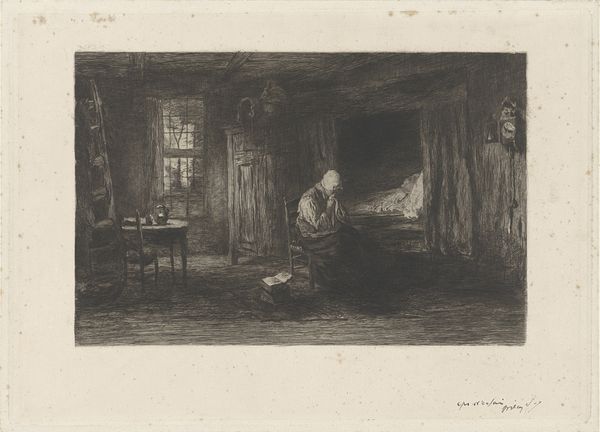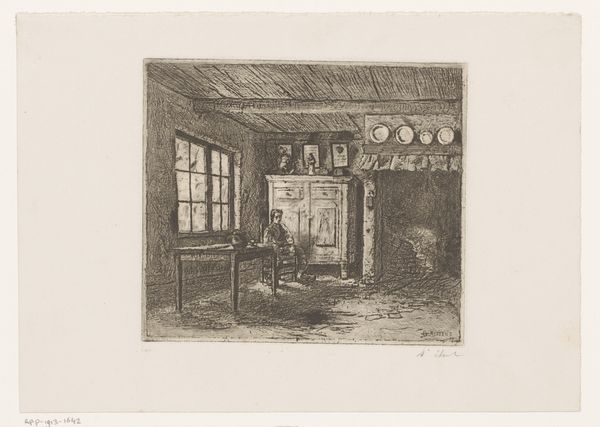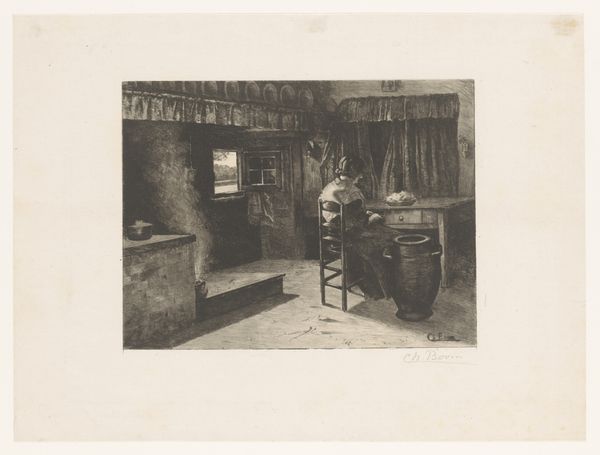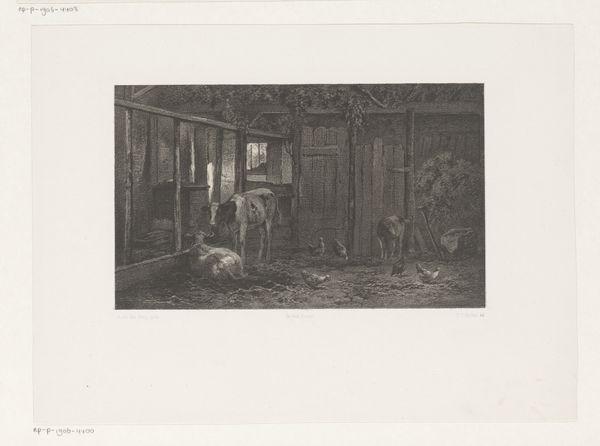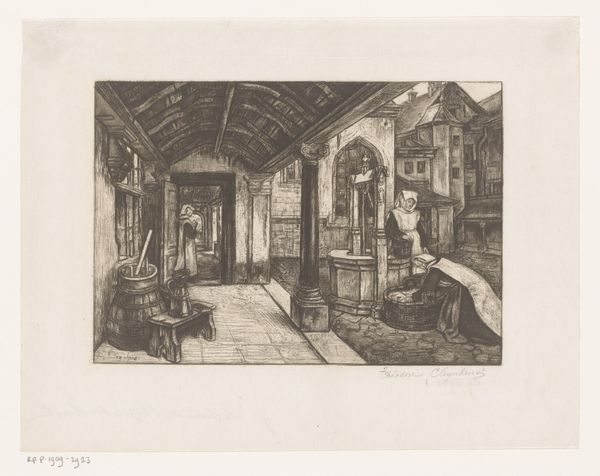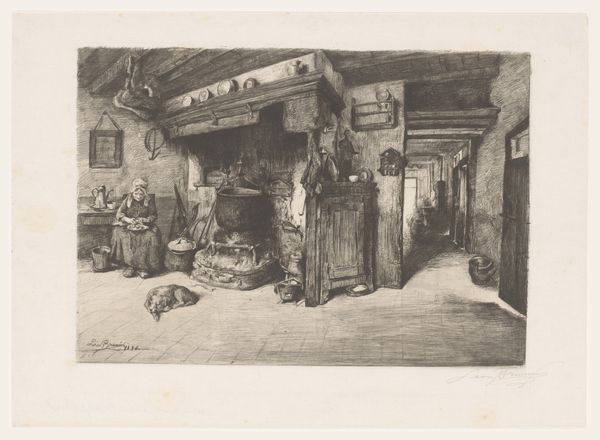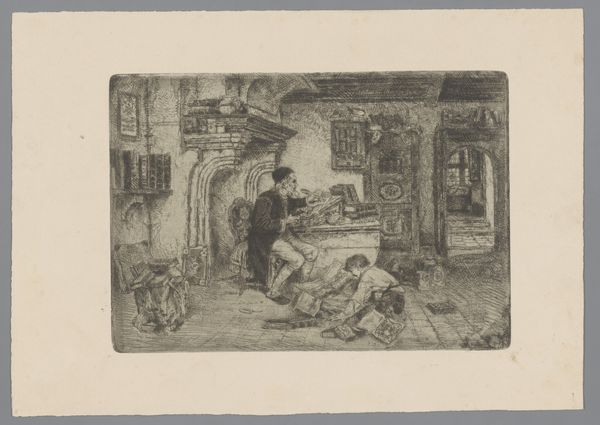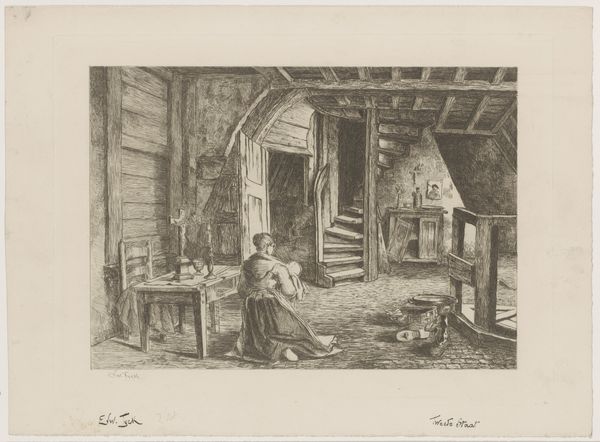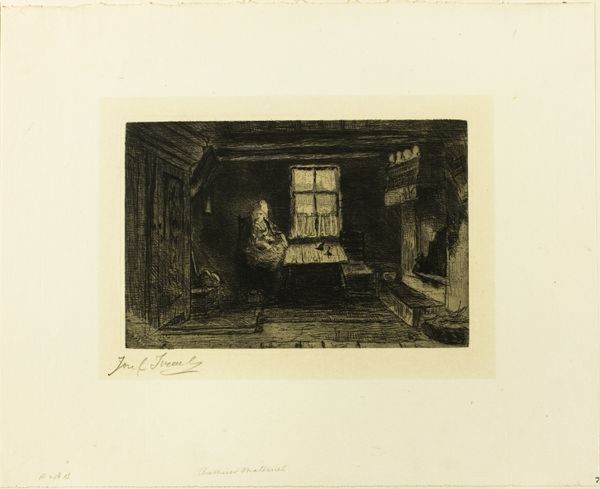
drawing, print, etching, paper
#
portrait
#
drawing
# print
#
etching
#
paper
#
genre-painting
Dimensions: height 242 mm, width 322 mm
Copyright: Rijks Museum: Open Domain
Curator: What strikes me first is the density of the scene, almost claustrophobic, with everything rendered in such dark, close tones. Editor: Indeed. This etching, titled "Two Gentlemen in an Interior" by Léon Brunin, likely created between 1871 and 1909, presents us with an intriguing glimpse into a private space and raises questions about gender, class and social standing. Look how that heavy lamp throws light mainly on the game. Curator: That central table under the light seems to command all the action—or rather, the inaction. Do you feel it evokes earlier artistic representations of intellectual discourse? The lamp calls up imagery related to illuminated manuscripts, suggesting the lamp’s metaphorical link to insight, inspiration and maybe revelation. Editor: That's a wonderful association. But it also whispers of confinement. We see what appears to be leisure, but for whom and at what cost? One wonders about access to education and recreation at the time; in these spaces where "gentlemen" pass their time. The space and those domestic objects reinforce the notion of "separate spheres" that assigned individuals certain behaviors based on gender. Curator: Notice how the faces aren't the focal point. There is a pronounced downplaying of traditional portraiture. What meaning can be drawn from Brunin’s avoidance? Perhaps it’s a symbol representing the shift away from glorifying particular subjects in portraiture towards something more grounded and relational? Editor: Precisely. The indistinct faces allows the viewer to explore this scene, focusing not on these men as unique individuals, but as symbolic figures occupying very gendered, very classed space. That makes me consider intersectional viewpoints to reflect on those who are not included, like the roles that women of a different social strata would embody as servants and caregivers. Curator: Despite its small size, this print really packs a visual and symbolic punch, from that single lamp above the scene and those indistinct images above the men's heads to the overall shadowy composition. Editor: Absolutely. It compels us to think critically about who has historically occupied space and wielded social capital, as well as who was kept outside those spaces and discourses, and that has tremendous meaning to this day.
Comments
No comments
Be the first to comment and join the conversation on the ultimate creative platform.

